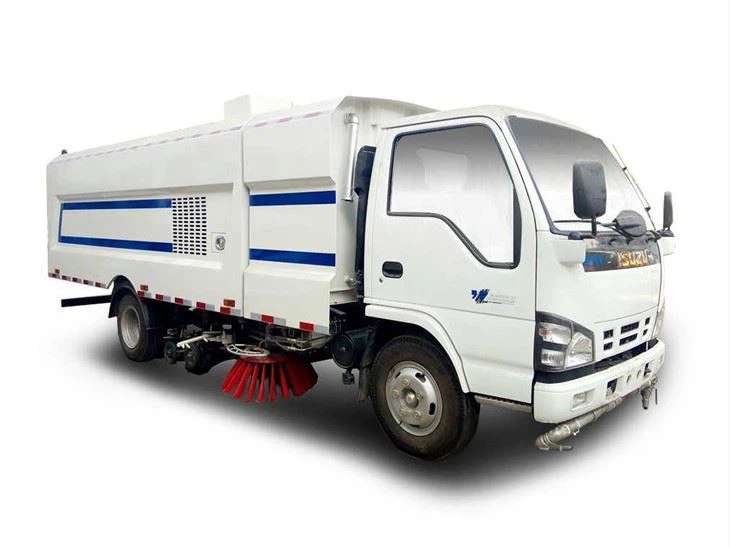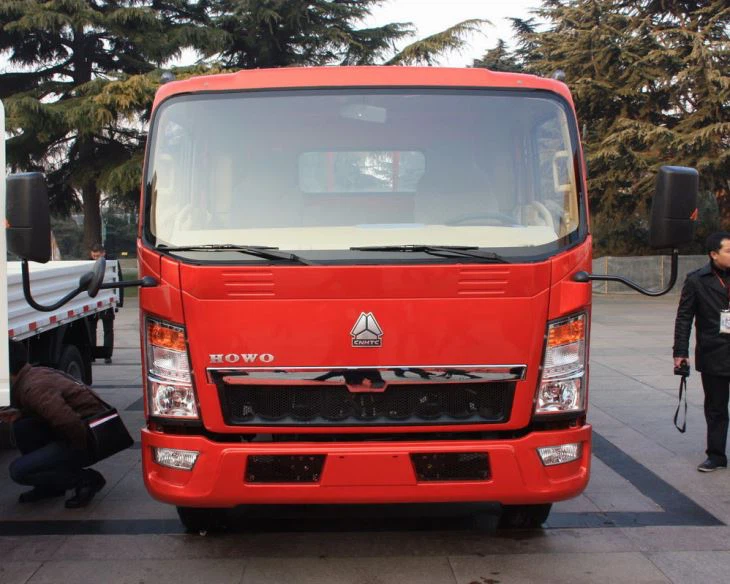Essential Guide to Street Cleaning Trucks: Importance, Types, and Maintenance

Street cleaning trucks play a crucial role in maintaining urban environments, ensuring that our cities remain clean, safe, and appealing. Whether you are a municipality official, a fleet manager, or a resident interested in city maintenance practices, understanding street cleaning trucks is essential. In this comprehensive article, we will delve into the various aspects of street cleaning trucks, their importance, types, features, maintenance practices, and answers to common questions surrounding these vital vehicles.
1. The Importance of Street Cleaning Trucks

Street cleaning trucks are vital for various reasons:
- Environmental Benefits: They help reduce airborne dust and pollution by cleaning debris off streets.
- Public Health: Regular cleaning prevents the accumulation of litter, which can harbor pests and attract disease.
- Aesthetic Value: Clean streets enhance the appearance of neighborhoods and promote community pride.
- Road Maintenance: Keeping roads clear of debris prevents damage to pavements and extends the lifespan of road surfaces.
2. Types of Street Cleaning Trucks
Street cleaning trucks come in various types, designed to meet specific cleaning needs. Here are some of the most common types:
2.1. Vacuum Trucks
Vacuum trucks utilize suction to pick up debris, dirt, and leaves. They are commonly used in urban areas where litter accumulates rapidly.
2.2. Mechanical Broom Street Sweepers
These trucks use rotating brushes to sweep dirt and debris from the streets, which can then be collected and stored in the truck.
2.3. Regenerative Air Sweepers
Regenerative air sweepers combine vacuum technology with high-pressure air, allowing for an efficient cleaning process that minimizes dust.
2.4. Compact Sweepers
Designed for narrow streets and alleys, compact sweepers are smaller in size but highly efficient in cleaning tight spaces.
3. Features of Modern Street Cleaning Trucks
Modern street cleaning trucks come equipped with several advanced features to enhance their efficiency and performance:
3.1. Advanced Filtration Systems
Many street cleaning trucks now include HEPA filtration systems to capture fine dust particles, contributing to improved air quality.
3.2. Smart Technology
Equipped with GPS and IoT technology, these trucks allow fleet managers to monitor and optimize routes for improved efficiency.
3.3. Noise Reduction Features
Newer models are designed to minimize noise pollution, ensuring that street cleaning operations are less disruptive to residents.
4. Maintenance Practices for Street Cleaning Trucks
Regular maintenance is crucial to prolong the lifespan of street cleaning trucks and ensure they operate efficiently:
4.1. Daily Inspections
- Check fluid levels, including fuel, oil, and water.
- Inspect the brushes and vacuum components for wear and tear.
4.2. Weekly Maintenance
- Clean the truck’s exterior and undercarriage to prevent corrosion.
- Inspect and clean the filtration systems to ensure proper functioning.

4.3. Monthly and Annual Servicing
- Change the oil and filters periodically based on usage.
- Schedule professional servicing to address any mechanical issues.
5. Practical Examples of Street Cleaning Operations
Several cities worldwide have adopted innovative street cleaning practices. Here are some notable examples:
5.1. San Francisco, California
San Francisco utilizes a fleet of water-efficient street sweepers that collect debris while conserving precious water resources.
5.2. London, UK
London has integrated smart technology in their fleet, allowing for real-time data collection on street conditions for efficient routing.
5.3. Amsterdam, Netherlands
Amsterdam’s street cleaning trucks are equipped with electric motors to reduce emissions and noise pollution in the city.
6. Key Factors in Choosing a Street Cleaning Truck
When selecting a street cleaning truck for a municipality or organization, consider these factors:
6.1. Type of Terrain
Select the type of truck based on whether the streets are urban, suburban, or rural.
6.2. Vehicle Size and Maneuverability
Consider the size of the truck, particularly if you need to operate in narrow or congested areas.
6.3. Budget and Cost Efficiency
Analyze the purchase price along with operational costs, including fuel efficiency and maintenance requirements.
7. Innovations in Street Cleaning Technology
Street cleaning technology continues to evolve with advancements in automation and sustainability:
7.1. Automated Cleaning Systems
Some new models are equipped with systems that reduce human intervention, increasing efficiency and safety.
7.2. Eco-Friendly Models

Electric and hybrid street cleaning trucks reduce greenhouse gas emissions and contribute to sustainability goals.
7.3. Data Analytics for Optimization
Data collected from operations can be analyzed to optimize cleaning schedules and routes, improving efficiency.
8. Regulations and Standards for Street Cleaning
Local governments often enforce regulations regarding street cleanliness, which impacts street cleaning trucks:
8.1. Environmental Regulations
Compliance with regulations regarding air quality and pollution management is essential for street cleaning operations.
8.2. Safety Standards
Trucks must meet safety standards to protect both operators and the public during cleaning operations.
9. Challenges Faced by Street Cleaning Operations
While street cleaning trucks are essential, they face several challenges:
9.1. Budget Constraints
Many municipalities struggle with limited budgets, impacting the frequency of street cleaning operations.
9.2. Adverse Weather Conditions
Rain, snow, or ice can hinder street cleaning efficiency, requiring the need for specialized equipment or approaches.
9.3. Public Awareness and Engagement
Encouraging public cooperation in keeping streets clean can be challenging but is essential for successful cleaning efforts.
10. Frequently Asked Questions about Street Cleaning Trucks
10.1. How often should street cleaning be conducted?
The frequency of street cleaning varies based on location, traffic, and local regulations, typically ranging from weekly to monthly.
10.2. What is the average lifespan of a street cleaning truck?
With proper maintenance, street cleaning trucks can last anywhere from 10 to 15 years depending on usage and care.
10.3. Are street cleaning trucks environmentally friendly?
Many modern street cleaning trucks are designed with eco-friendly features, including electric options and systems that reduce pollutants.
10.4. How much does a street cleaning truck cost?
The cost of a street cleaning truck varies widely depending on the type and model, generally ranging from $100,000 to $350,000.
10.5. Can street cleaning trucks operate during heavy traffic?
Street cleaning trucks can operate during heavy traffic but may need to schedule cleaning times during off-peak hours to minimize disruptions.
10.6. What types of debris can street cleaning trucks remove?
Street cleaning trucks can handle a variety of debris, including leaves, litter, gravel, and small organic materials.
